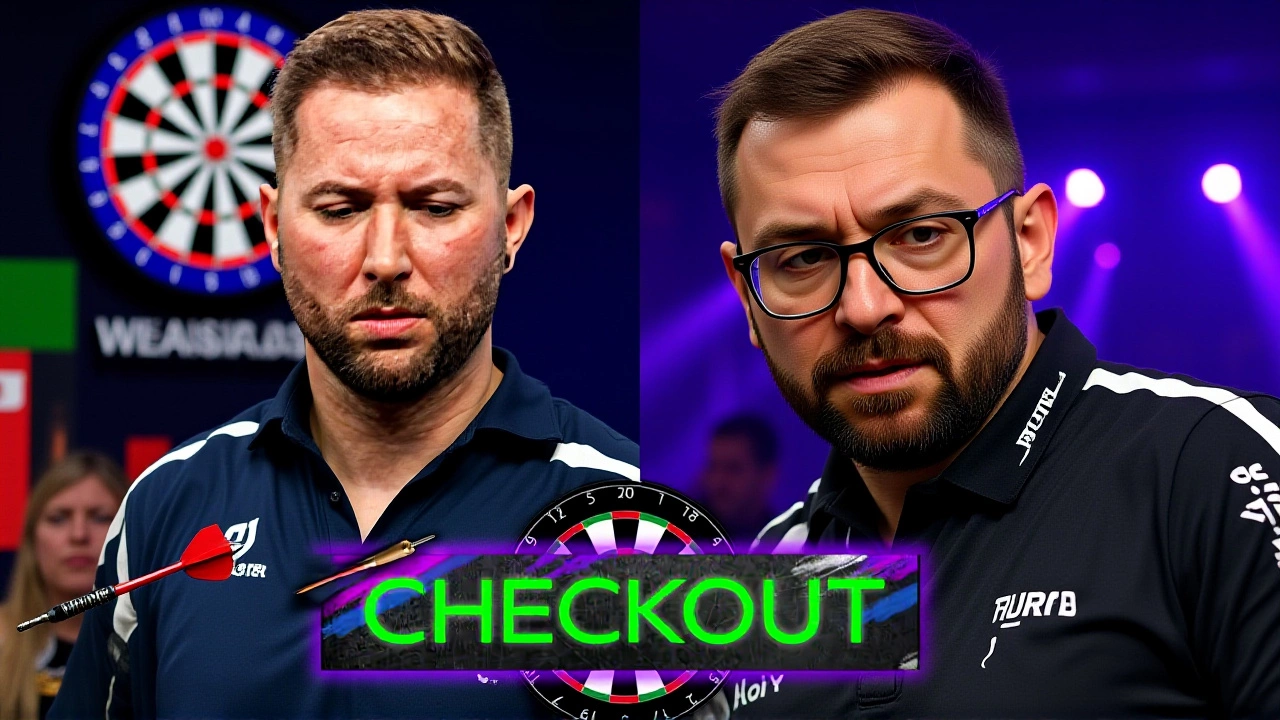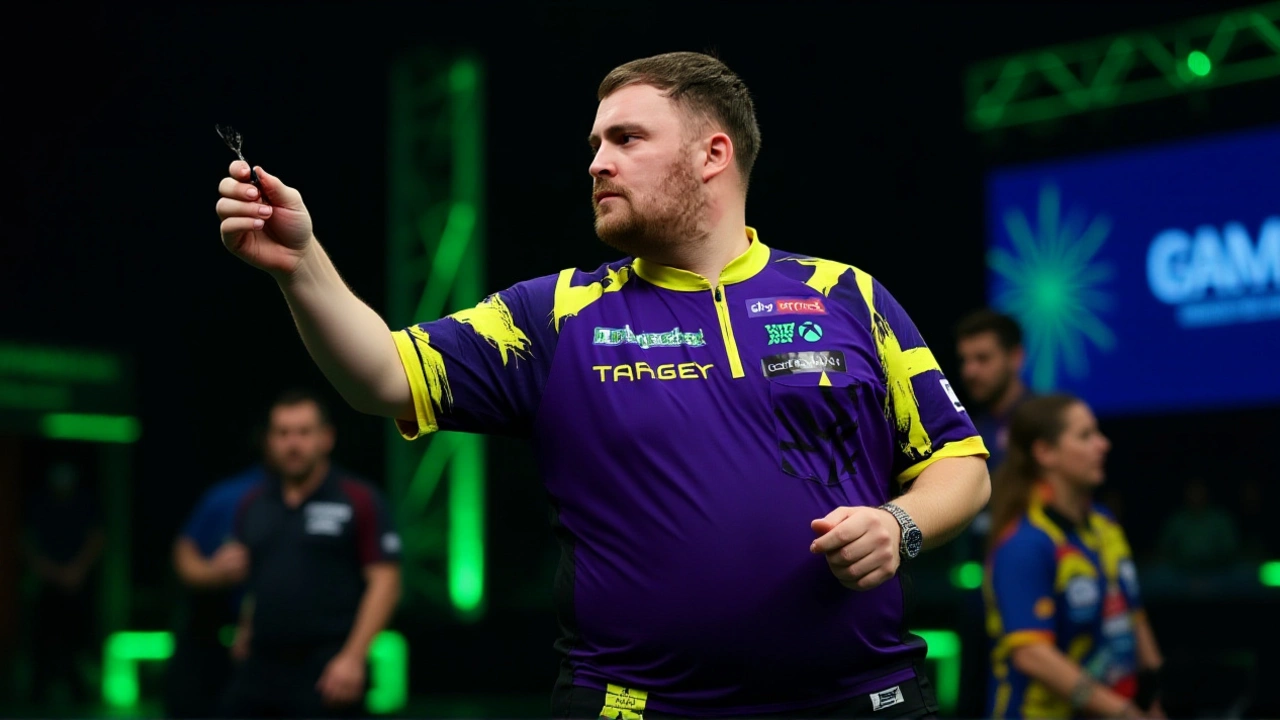At 18 years old, Luke Littler didn’t just win his quarter-final match—he made history. On Saturday, November 15, 2025, at 1900 GMT, the defending champion outlasted Northern Ireland’s Josh Rock 16-12 in the second quarter-final of the 2025 Mr Vegas Grand Slam of DartsWolverhampton Civic Hall, extending his undefeated run in the tournament and setting up a semi-final clash with Gerwyn Price. The win wasn’t just about skill—it was poise under pressure, the kind you don’t expect from someone still in high school. And yet, here he is, carrying the weight of expectation like a veteran.
From Group Stage to Glory
Littler didn’t breeze through the early rounds. He had to grind. In Group E, he beat Czech Republic’s Karel Sedláček 5-1, then edged out England’s Connor Scutt 5-3 after hitting a stunning 170 checkout to level the match at 1-1. That moment—when the crowd roared and the dart flew perfectly into the bullseye—was the first real sign that this kid wasn’t just lucky. He was calculating. Then, on Thursday, November 13, he demolished Netherlands’ Wessel Nijman 10-4, sending a message: the throne isn’t just defended—it’s being expanded.Meanwhile, the rest of the bracket was chaos. Luke Humphries, the 2024 World Champion, dropped a nine-dart finish on Michael Smith during his group stage win—a second televised perfect leg of his career. Michael Smith, a three-time major winner, survived a nail-biter against Chris Dobey 10-9, missing 18 darts at double. "I should never have been in that match," Smith admitted afterward. "But I’ll take it." That’s the Grand Slam for you: one bad leg, one missed double, and your tournament’s over.
The Quarter-Final Battlefield
The quarter-finals on November 15 were a masterclass in contrast. Danny Noppert blew past Germany’s Lukas Wenig 16-8, showing why he’s been one of the most consistent performers this year. Then came Littler vs. Rock. Rock, 25, had been the surprise package—clean, clinical, with a quiet confidence. He took the first leg. Then the second. But Littler didn’t flinch. He started stringing together 180s. He hit doubles under pressure. He didn’t just win—he controlled the rhythm.At 12-12, Rock had a chance to go ahead. He missed double 16. Littler stepped up. Double 18. Then double 12. The crowd fell silent. Then exploded. He won the next four legs without reply. Final score: 16-12. The undefeated streak lives. And so does the idea that a teenager might be the best darts player on the planet right now.

The Final Four and the Road to the Sid Waddell Trophy
The semi-final lineup was set: Luke Littler vs. Gerwyn Price, and Danny Noppert vs. Luke Humphries. The semi-finals were scheduled for Sunday, November 16, 2025, with the final to follow later that day at the same venue.Price, 39, the former world champion, had edged Ricky Evans 16-9 in his quarter-final—a match that had fans on their feet. Humphries, 29, had steamrolled Smith 16-8. But neither had faced someone like Littler. At 18, he’s not just the youngest player left—he’s the only one who hasn’t lost a single leg in the knockout stage. That’s unprecedented in the 19-year history of the Grand Slam.
The prize? £150,000. The trophy? The Sid Waddell Trophy, named after the legendary commentator who once said, "Darts isn’t just a game—it’s theatre." And this year’s theatre? It’s being written by a kid who doesn’t even need a driver’s license yet.
Behind the Scenes: The Numbers That Matter
The 2025 edition, sponsored by Mr Vegas for the first time after William Hill’s decade-long run, featured 32 players across eight groups. Prize money was structured with precision: group winners got £3,500 extra, quarter-finalists £25,000, last 16 earners £12,250, and fourth-place group finishers £5,000. Beau Greaves, the 21-year-old Australian woman, set a new tournament record for highest average by a female player—though the exact figure remains unconfirmed by the PDC.On the sidelines, fans watched as the tournament evolved. Group A saw Nathan Aspinall edge out Alex Spellman 5-2. Group C had Luke Woodhouse qualify by beating Philippines’ Alexis Toylo 5-2. And then there was Jonny Clayton, 49, who nearly beat Noppert in the group stage—only to lose 5-4 in a final leg that lasted seven minutes.

What’s Next?
The semi-finals on November 16 will be the real test. Can Littler handle Price’s intensity? Can Noppert outlast Humphries’ precision? One thing’s clear: the final will be the most-watched Grand Slam final in history. Social media buzz is off the charts. TikTok clips of Littler’s 170 checkout have over 12 million views. And for the first time, a teenager is not just competing in the final four—he’s the favorite.The last time a player this young won a major PDC title? Never. But if he wins Sunday? He won’t just be a champion. He’ll be a phenomenon.
Frequently Asked Questions
How has Luke Littler’s performance changed the perception of young darts players?
Littler’s dominance has shattered the myth that experience always wins in darts. At 18, he’s averaging over 100 in high-pressure legs, a figure typically seen in top-10 veterans. His calm under pressure and tactical discipline—often more advanced than older rivals—have forced coaches to rethink youth development. The PDC has already begun discussions on creating a dedicated under-21 development tour.
What makes the Grand Slam of Darts different from other PDC tournaments?
Unlike the World Championship or Premier League, the Grand Slam includes qualifiers from non-PDC circuits, making it the most diverse field in darts. Players from the BDO, WDF, and even international leagues compete alongside PDC stars. This creates unpredictable matchups—like when a 26-year-old from the Philippines nearly beat a world champion in 2025. The format also rewards consistency: group stages eliminate flukes, and the double-elimination style in the knockout rounds tests endurance.
Why did Mr Vegas become the sponsor of the Grand Slam in 2025?
Mr Vegas, a UK-based online casino brand, saw an opportunity to tap into darts’ massive UK audience—over 8 million regular viewers. After William Hill’s sponsorship ended amid regulatory shifts, Mr Vegas stepped in with a £5 million deal, the largest in the tournament’s history. Their branding is now visible on every dartboard, scoreboard, and broadcast graphic, signaling a new era of commercialization for the sport.
Has any teenager ever won a major PDC title before?
No. The youngest winner of a PDC major was Michael van Gerwen, who was 21 when he won the 2012 World Grand Prix. Littler, at 18, is the first teenager to reach the final four of any PDC major since the organization’s founding in 1992. His run has drawn comparisons to tennis prodigies like Boris Becker, but in darts, where mental stamina and decades of muscle memory matter, it’s unprecedented.
What’s the significance of the Sid Waddell Trophy?
Named after the late BBC commentator Sid Waddell—who famously called darts "the sport of kings and the kings of sport"—the trophy is awarded to the Grand Slam champion. It’s not just a prize; it’s a symbol of legacy. Past winners include Phil Taylor, Raymond van Barneveld, and Michael van Gerwen. Winning it as an 18-year-old would cement Littler’s place in darts folklore, not just as a talent, but as a generational force.
How did Beau Greaves’ performance impact the tournament?
Beau Greaves, 21, became the first woman to reach the last 16 in Grand Slam history, averaging 98.4 in her group stage matches—higher than several male competitors. Though she lost 5-3 to Danny Noppert, her presence forced broadcasters to give her matches full airtime and sponsors to rethink gender representation in darts. Her performance sparked calls for a dedicated women’s Grand Slam, a move the PDC has signaled it’s considering for 2026.
